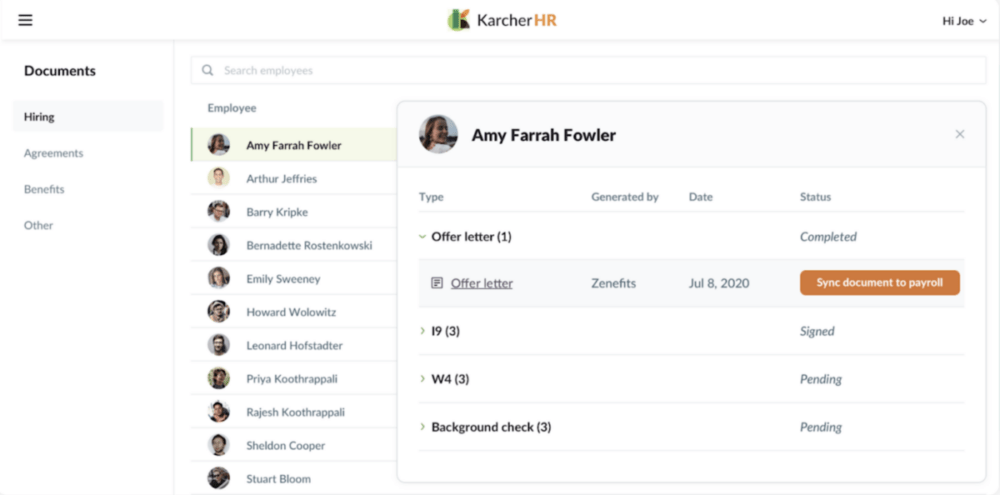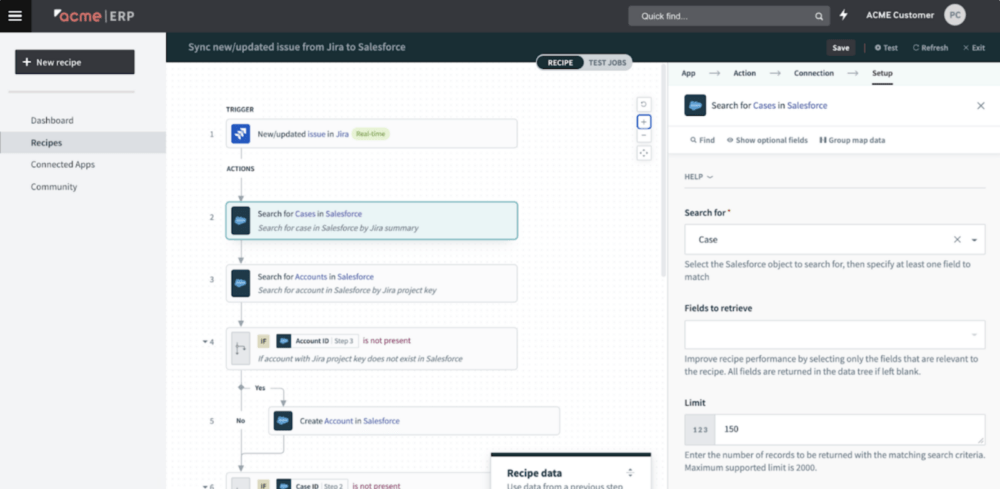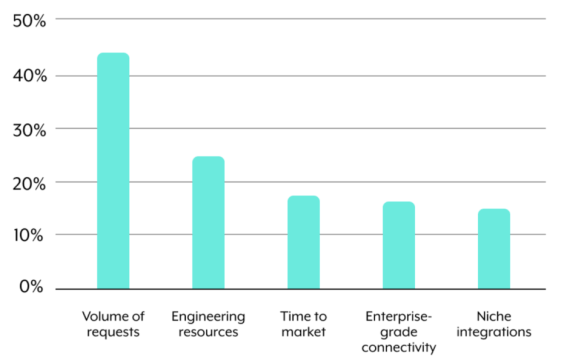As a product leader, you’re likely facing immense pressure in today’s rapidly evolving economic landscape.
You might be under pressure to deliver more features more quickly and be looking for opportunities to showcase your team’s work to avoid layoffs and maintain planned headcount.
In short, you need to deliver more value to your organization and clients with the same—or even fewer—resources. To help you navigate this situation successfully, leveraging an embedded iPaaS can be a game-changer, enabling you to implement a scalable, high-performing product integration strategy.
We’ll explore how an embedded iPaaS can benefit your team and product, and how you can secure internal buy-in for purchasing the solution. But first, let’s define embedded integrations.

How successful B2B companies use an embedded iPaaS
Learn how brands like Tango Card, Unanet, and CyCognito leverage an embedded iPaaS to transform their customer and employee experience.
What are embedded integrations?
Embedded integrations are powered by an embedded iPaaS and can be directly embedded into your product’s UI by you or your clients. These integrations can be implemented in two ways:
1. In-line Experience: You build the integrations and automations yourself, and users access them as part of your product.
For example, the fictional HR platform below is integrated with a payroll system and—using the embedded iPaaS’ in-line experience—has added the button “Sync document to payroll” within its UI. This allows their users to sync offer letters directly to payroll with a simple click off a button.

2. Embedded Automation Customization: Clients can implement integrations and automations themselves.
For instance, let’s assume your company is ACME ERP systems. Within your platform, clients can build the integrations and automations they need, which might include syncing issues in Jira with cases in Salesforce (as shown below).

Why you should invest in embedded integrations
To help you better understand the “why” behind using an embedded iPaaS, you need to be aware of the top challenges you’d face when building integrations natively.
To understand the value of using an embedded iPaaS, consider the top challenges you’d face when building integrations natively.
Based on an analysis we ran on 200 product managers, here are the main issues that come with native builds and that an embedded iPaaS can solve for:

Let’s drill down on the three most frequently-cited sources of friction.
Related: 3 benefits of using embedded integrations
Volume of requests
The feedback you and your team receive over time, both implicit and explicit, often reveals a long list of integrations that need to be built.
Once a client discovers an integration you brought to market, for example, they might request an integration for a similar application they use; your sales reps might uncover that, in order to be competitive during the RFD process, your product needs to offer certain integrations; your customer success managers might find that the absence of a specific integration is causing clients to churn—and so on.
In the current economic climate, clients’ expectations are only increasing. They expect your product to either already integrate with the applications in their tech stack or to provide such integrations with minimal delay. Falling short of these standards can lead to fewer sales and a drop in client retention.
Unfortunately, building and maintaining each API connection is extensive work that often requires your most technical engineers. As a result, your team may struggle to bring integrations to market quickly enough and to push enough integrations live over time.
An embedded iPaaS neatly addresses these drawbacks.
For one, the platform offers pre-built API connectors to applications and databases, allowing you and your clients to integrate to these systems with little hassle.
Equally important, it features a low-code UX that allows both your business teams and your clients’ teams to be involved in building and maintaining integrations and automations. This approach offers several advantages: non-technical team members can utilize their business insights to design and implement integrations effectively, ensuring they are highly impactful. Additionally, involving a broader range of builders helps to prevent integration bottlenecks from occurring.
Engineering resources
As your clients put a microscope on their software investments, you’ll want to leave little reason for them to scrutinize yours.
Any issues that could negatively impact your product experience need to be minimized or avoided altogether. New features must be rolled out on time and successfully, and product enhancements need to be executed consistently.
And while it might not seem to be the case, building integrations natively threatens your engineers’ ability to carry out these very tasks. Instead of focusing on your core product, they’re forced to spend their time building various apps’ APIs, each requiring its own process of discovery, planning, and building.
Elliot White, the Head of Product at Tango Card, a leading incentive-delivery technology platform, elaborates on this predicament:
An embedded iPaaS can free up your engineers for many of the reasons highlighted earlier. Builders without a coding background can play a significant role in building and maintaining connections and automations. In turn, your engineers are freed up to focus on what they’re uniquely qualified to handle: working on critical initiatives specific to your core product.
Related: When to build integrations natively and when to buy (embed) them
Time to market
Your clients not only expect their integration requests to get addressed quickly—they want a clear timeline of when certain integrations will go live.
Building native integrations leads you to fall short on both fronts. Your engineers may struggle to keep up with demand, and due to the technical complexities involved, assigning a precise go-live date can be nearly impossible.
Fortunately, embedded integrations allow you to expedite delivery timelines from months to days. This capability enables your team to accept integration requests more readily, ensuring you provide a best-in-class customer experience.
David Devenport, the Head of Integrations at Spiff, the leading sales commission software and commission tracker, highlights how Workato’s Embedded iPaaS has allowed them to fast-track their time to market for integrations:
How to get internal buy-in for investing in an embedded iPaaS
Once you’re bought into using an embedded iPaaS, you’ll need to get your key stakeholders on board as well. Here are a few strategies to help you secure internal buy-in:
Present current issues with business-critical data
Your approvers likely aren’t as interested in the various features that an embedded iPaaS provides. They’re more focused on the reasons behind the investment.
With this in mind, you can compile and then share out a few metrics that are likely to resonate and create some urgency:
- The number of hours your developers currently spend building and maintaining API connections over a given timeframe
- The average number of weeks (or even months) it takes your team to launch a new integration
- The number of deals (as well as the expected sizes of those deals) that your team recently lost due to not offering a certain integration(s)
- The clients that churned and the revenue that was lost due (at least partly) to not offering certain integrations
There’s obviously a host of other data points you can bring to the conversation. As long as you pick ones that you know your colleagues care about and will give them a healthy dose of anxiety, your path to acquiring a budget will be that much easier.
Recruit internal champions
While your superiors respect your requests, especially when they’re accompanied by meaningful data, they carry more weight when supported by leaders from other departments.
Based on the current challenges of native builds, you may be able to recruit leaders within engineering, sales, customer success, etc. to also advocate for having an embedded iPaaS. Once they are, your request becomes all too difficult for management to reject.
Share success stories
Management likely has certain companies they admire and want to emulate in various ways. In addition, there are likely certain competitors they’re keeping a close eye on and want to get an edge over or catch up to.
The embedded platform you’re evaluating may have publicized customer success stories with such competitors or admired brands. Simply pulling them and their stories into your internal pitch can move the needle effectively.
Transform your product with Workato’s Embedded Platform
Workato offers an Embedded Platform that accelerates product innovation and adoption by offering integrations at the speed and depth your customers demand.
With Workato, you can:
- Take embedded integrations to market 3x faster with access to 1000+ pre-built connectors to SaaS applications and databases and hundreds of thousands of automation templates—which we refer to as “recipes”
- Enable less technical resources to implement integrations and automations in minutes via our low-code UI – freeing up engineering resources to focus on you core product
- Seamlessly embed our Enterprise Automation Platform directly into your product with the configuration options that meet your needs
- Use a centralized admin dashboard to easily track usage and manage permissions
- Drive new revenue and differentiation by productizing your integrations and automations
- Leverage our patented Workbot to build chatbots that can be incorporated into your product’s workflow automations—or that simply allow clients to access data and actions from your product without leaving their business comms platform
To learn more about how Workato’s Embedded Platform can help drive efficient, product-led growth you can schedule a demo with one of our integration experts.
